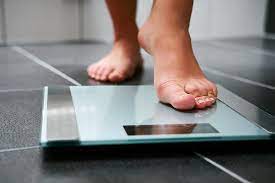Effective Methods to Help Reduce Scoliosis Pain
Scoliosis is an abnormal curvature of the spine, which can be followed by pain, discomfort, and impaired mobility. This medical condition mostly affects children during the growth spurt period, but it can also appear in adults caused by degenerative changes in the spine. People struggling with scoliosis should explore ways to mitigate the associated discomfort, especially the pain.
Here are the effective methods to help reduce scoliosis pain, offering valuable and practical tips to improve your health.
Consult with a medical specialist
When scoliosis pain appears, the first thing to do is consult with a medical specialist. They will help identify any underlying causes contributing to your pain and develop a comprehensive plan to keep it under control. Moreover, regular medical checks will ensure that you receive accurate therapy and personalized care to deal with your scoliosis-related discomfort.
In case the condition worsens, you may have to consider visiting a more specialized expert, for example, a board-certified neurosurgeon in Brisbane. They may suggest a combination of non-surgical interventions, like physical therapy, pain medication, and wearing braces. But if your scoliosis has worsened or is affecting your quality of life, you may have to undergo surgery to stop its progression.
Start exercising regularly
Regular exercise is an effective method to manage scoliosis pain. Low-impact activities, like swimming, yoga, and Pilates can help strengthen the core muscles, improve flexibility, and enhance overall posture. These exercises promote spinal alignment, relieve muscle tension, and reduce pain associated with scoliosis.
Before you start exercising, however, it’s important to consult with a physical therapist or a qualified exercise professional to develop and guide you in performing appropriate movements. The exercise program needs to be tailored specifically for you, ensuring that you engage in activities that are safe and beneficial for your spine.
Explore alternative therapies
There are conventional medical approaches and, then, there are alternative therapies that can provide supplementary relief for scoliosis pain. Techniques such as chiropractic care, acupuncture, and massage therapy can help reduce discomfort and improve overall spinal function. For example, chiropractic adjustments can help restore proper alignment, acupuncture can stimulate the body’s natural healing mechanisms, and massage therapy can relieve muscle tension and promote blood circulation.
However, before starting any of these methods, you should consult with your healthcare provider to ensure they don’t cause interference with any existing medical conditions or current medications. Additionally, these should serve as complementary methods to traditional treatments and be applied alongside them for the best results.
Maintain a healthy weight
Excess or insufficient weight can strain the spine and worsen the pain, so maintaining a healthy body mass is crucial for individuals with scoliosis. A well-balanced diet paired with regular exercise can help you achieve a healthy weight and reduce the load on your spine. Include more fruits, vegetables, fiber, lean proteins, nuts, and whole grains in your diet since they provide essential nutrients for bone health.
Avoiding processed foods and sugar, as well as downsizing on caffeine, can help reduce inflammation and keep your weight in check. Go to a registered dietitian for personalized guidance and a dietary plan tailored to your specific needs. Even with perfect figures, you should make healthy dietary choices to improve bone and muscle health.
Practice good posture
Good posture is essential for managing scoliosis pain and maintaining spinal alignment. It can help distribute the load evenly across the spine thus reducing strain on the affected areas. When sitting or standing, ensure that your back is straight, your shoulders are relaxed, and your head is aligned with your spine.
Ergonomic furniture, such as an adjustable chair or a supportive mattress, can also contribute to better posture and improved comfort. Additionally, avoid slouching or bending at the waist and, instead, use your legs and core muscles to support your movements.
Consider wearing a brace
Scoliosis braces are constructed with a rigid material that immobilizes the spine, providing pain relief and preventing further damage. Although it’s better to get those tailor-made for you, there is also an option to purchase them from a specialized store. The most common type is orthosis, which is worn like a vest around the torso.
However, there are also braces designed to support a single shoulder called shoulder harnesses or those directly attached to the neck/shoulder area known as cervical collars. Although your doctor will advise you about wearing braces, you can also consult with them if you feel you should wear one before buying it on your own.
Finally
Living with scoliosis can be challenging, but these effective methods can help reduce pain and improve your quality of life. However, you shouldn’t do anything without consulting with a medical specialist for accurate diagnosis and personalized treatment options. Also, regular exercise, maintaining a healthy weight, and practicing good posture, can all contribute to managing scoliosis pain and regaining control over your life.



